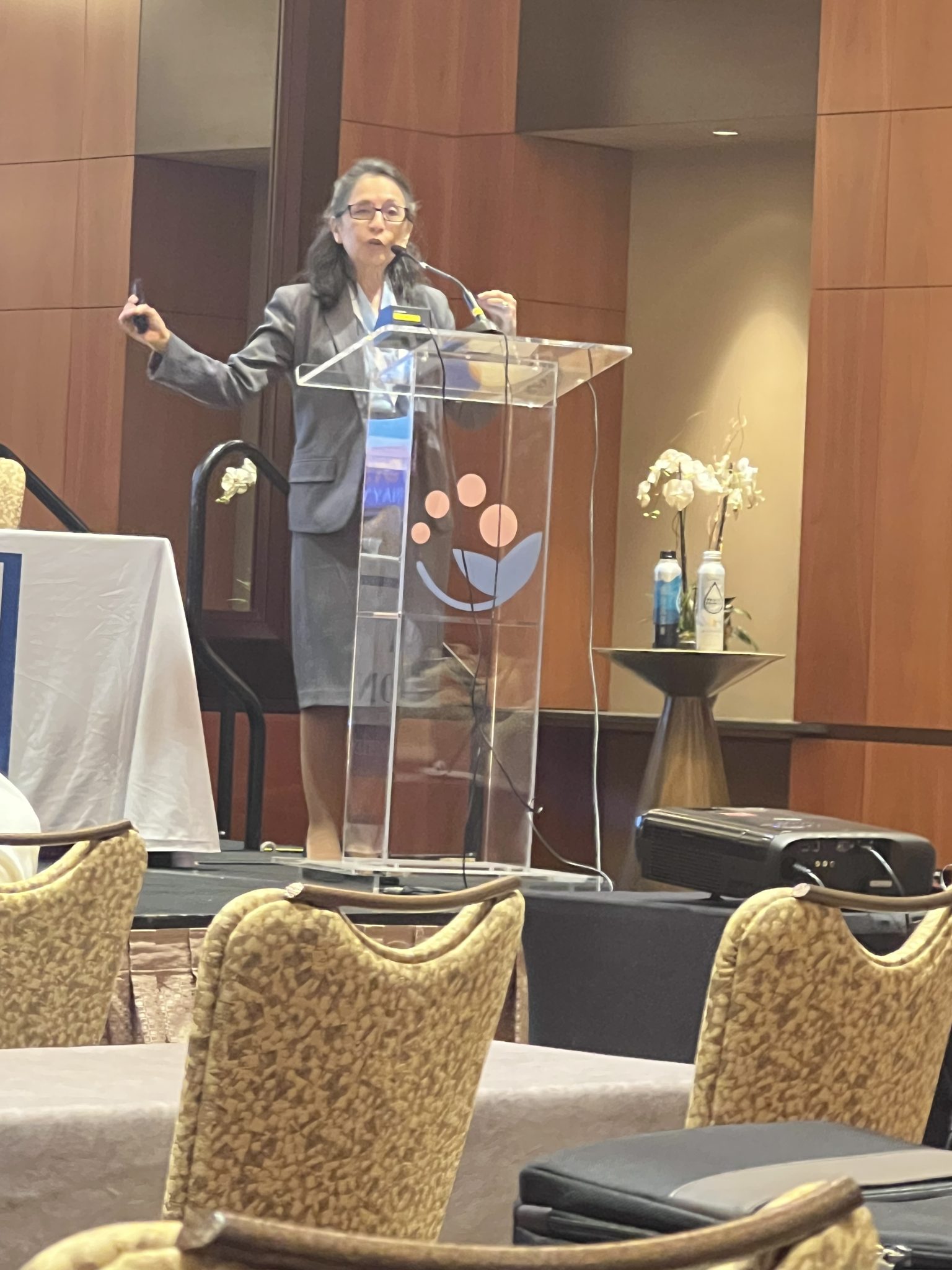Clinical trials are the process by which progress is made in clinical care. It is accepted and understood that participants in clinical trials must be assessed for both toxicity and efficacy, but what if the assessment could be accomplished without toxicity to a single person?
By bringing together computer scientists and clinician-scientists, the concept of a digital twin has emerged. A digital twin is a virtual model of an individual person, a virtual patient or avatar. This digital twin may then be used to predict the effect of a new therapy by running a simulated treatment, a clinical trial, without harm. This approach supports our goals towards personalized medicine through preclinical drug development via treatment simulations or virtual clinical trials.
Precision and predictive cancer care – Presented by Ana María López
Personalized cancer care is important for multiple reasons. Cancer is not a single disease. Cancer is not just the cancer cells. Cancer involves the tumor environment which is the individual, that is, the underlying genomics and functional systems are critical to disease and treatment response. In short, the individual matters.
The concept of digital twins is not brand new. Virtual models exist in other disciplines, such as, in automobile design, aerospace, and climate studies. Virtual models can be used to predict behavior, monitor current response, and predict response in future scenarios. The data methodology from climate forecasting is being adapted to “cancer forecasting”.
An approach that we are exploring with digital twins is a question related to lung cancer. We are aware that lung cancer risk increases with smoking behavior. Despite what we know of smoking risk, not all populations have decreased smoking behavior and not all lung cancer risk is attributable smoking behavior. So the question emerges-How can a digital twin help us better understand smoking risk in different populations? How can a digital twin help us test lung cancer therapies without human risk?
The Sydney Kimmel Cancer Center’s neighbor in Philadelphia is Chinatown. Lung cancer is a concern in this Chinese immigrant community. We’re aware that lung cancer incidence in China has been on the rise and that lung cancer incidence in the US has experienced a steady decrease since the 1990s. This is important because China is home to 20% of the world population, 37% of all new lung cancers. And 40% of lung cancer deaths.
Known risk factors are environmental factors, such as, cigarette smoking, radon, and air pollution. Smoking risk is significant in the Chinese American community. To understand smoking risk, let’s look at smoking rates in the US (2019).
US population overall: 14%, Chinese Americans: 7.6%, Chinese American males: 34%, and Chinese American females: 2% for females. It is known that not all people diagnosed with lung cancer are smokers and that males tend to smoke more than females. In the US, among Asian American females diagnosed with lung cancer, 57% have never smoked.
Creating a digital twin requires blending what we know—databases and patient data—to get a sense of what factors impact a person with lung cancer, and then to look at the patient data to bring together the digital. From this perspective, we seek to understand the disparities noted above and begin to understand better incidence, outcomes, and actionable approaches that may change outcomes.
References
- https://frederick.cancer.gov/news/digital-twins-cancer-care-exploring-cross-disciplinary-innovative-approach
- Stahlberg EA, Abdel-Rahman M, Aguilar B, Asadpoure A, Beckman RA, Borkon LL, Bryan JN, Cebulla CM, Chang YH, Chatterjee A, Deng J, Dolatshahi S, Gevaert O, Greenspan EJ, Hao W, Hernandez-Boussard T, Jackson PR, Kuijjer M, Lee A, Macklin P, Madhavan S, McCoy MD, Mohammad Mirzaei N, Razzaghi T, Rocha HL, Shahriyari L, Shmulevich I, Stover DG, Sun Y, Syeda-Mahmood T, Wang J, Wang Q, Zervantonakis I. Exploring approaches for predictive cancer patient digital twins: Opportunities for collaboration and innovation. Front Digit Health. 2022 Oct 6;4:1007784. doi: 10.3389/fdgth.2022.1007784. PMID: 36274654; PMCID: PMC9586248.
- Chang HC, Gitau AM, Kothapalli S, Welch DR, Sardiu ME, McCoy MD. Understanding the need for digital twins’ data in patient advocacy and forecasting oncology. Front Artif Intell. 2023 Nov 10;6:1260361. doi: 10.3389/frai.2023.1260361. PMID: 38028666; PMCID: PMC10667907.
- Lei F, Lee E, Toyama J. Smoking Prevalence and Correlates among Chinese Immigrants: A Secondary Data Analysis Study. Int J Environ Res Public Health. 2023 Apr 18;20(8):5559. doi: 10.3390/ijerph20085559. PMID: 37107840; PMCID: PMC10138438.
- Lei F, Lee E, Toyama J. Smoking Prevalence and Correlates among Chinese Immigrants: A Secondary Data Analysis Study. Int J Environ Res Public Health. 2023 Apr 18;20(8):5559. doi: 10.3390/ijerph20085559. PMID: 37107840; PMCID: PMC10138438.
- Gomez SL, Yang J, Lin SW, McCusker M, Sandler A, Cheng I, Wakelee HA, Patel M, Clarke CA. Incidence trends of lung cancer by immigration status among Chinese Americans. Cancer Epidemiol Biomarkers Prev. 2015 Aug;24(8):1157-64. doi: 10.1158/1055-9965.EPI-15-0123. Epub 2015 May 19. PMID: 25990553; PMCID: PMC5746176.





